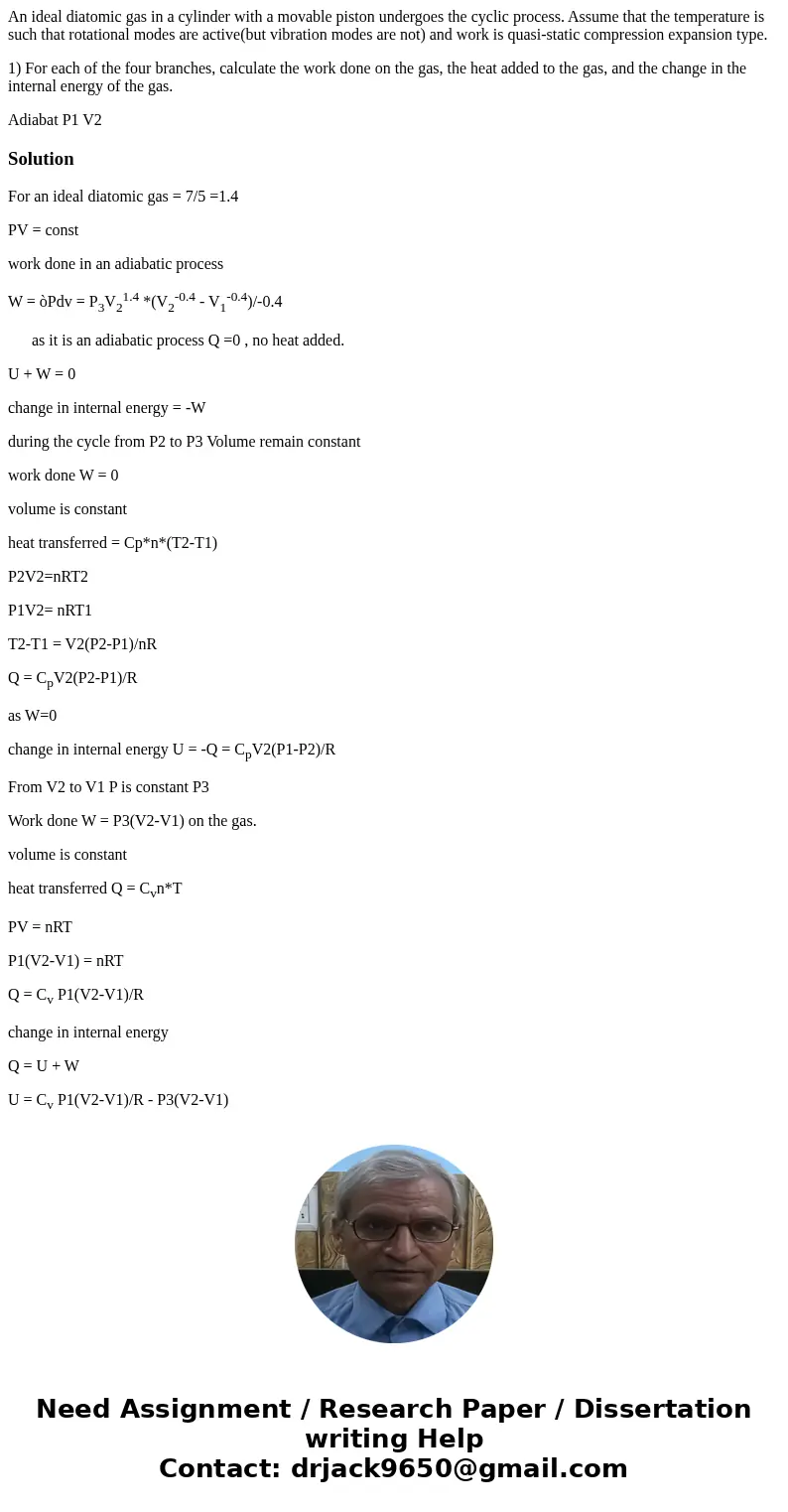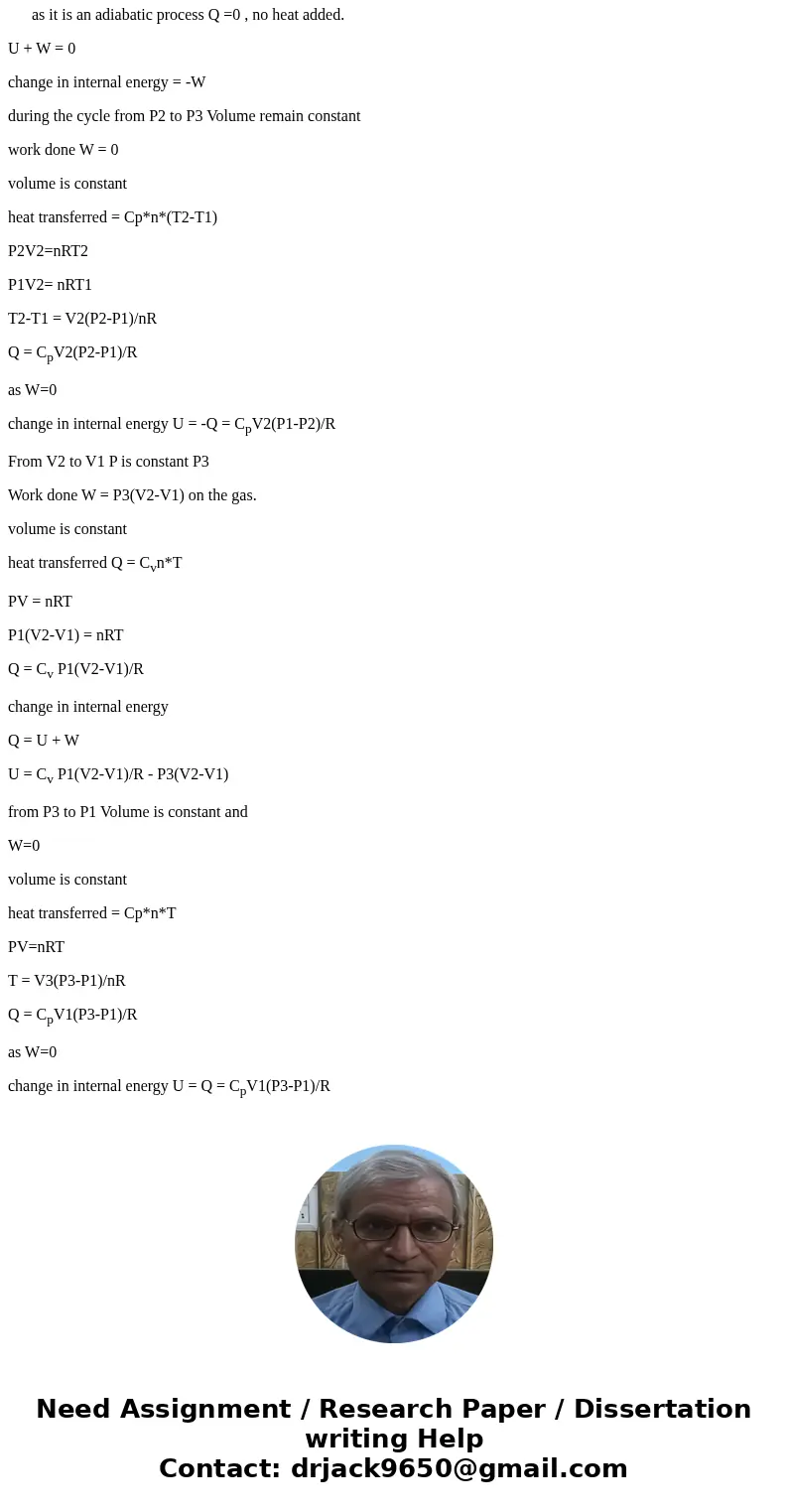An ideal diatomic gas in a cylinder with a movable piston un
An ideal diatomic gas in a cylinder with a movable piston undergoes the cyclic process. Assume that the temperature is such that rotational modes are active(but vibration modes are not) and work is quasi-static compression expansion type.
1) For each of the four branches, calculate the work done on the gas, the heat added to the gas, and the change in the internal energy of the gas.
Adiabat P1 V2Solution
For an ideal diatomic gas = 7/5 =1.4
PV = const
work done in an adiabatic process
W = òPdv = P3V21.4 *(V2-0.4 - V1-0.4)/-0.4
as it is an adiabatic process Q =0 , no heat added.
U + W = 0
change in internal energy = -W
during the cycle from P2 to P3 Volume remain constant
work done W = 0
volume is constant
heat transferred = Cp*n*(T2-T1)
P2V2=nRT2
P1V2= nRT1
T2-T1 = V2(P2-P1)/nR
Q = CpV2(P2-P1)/R
as W=0
change in internal energy U = -Q = CpV2(P1-P2)/R
From V2 to V1 P is constant P3
Work done W = P3(V2-V1) on the gas.
volume is constant
heat transferred Q = Cvn*T
PV = nRT
P1(V2-V1) = nRT
Q = Cv P1(V2-V1)/R
change in internal energy
Q = U + W
U = Cv P1(V2-V1)/R - P3(V2-V1)
from P3 to P1 Volume is constant and
W=0
volume is constant
heat transferred = Cp*n*T
PV=nRT
T = V3(P3-P1)/nR
Q = CpV1(P3-P1)/R
as W=0
change in internal energy U = Q = CpV1(P3-P1)/R


 Homework Sourse
Homework Sourse